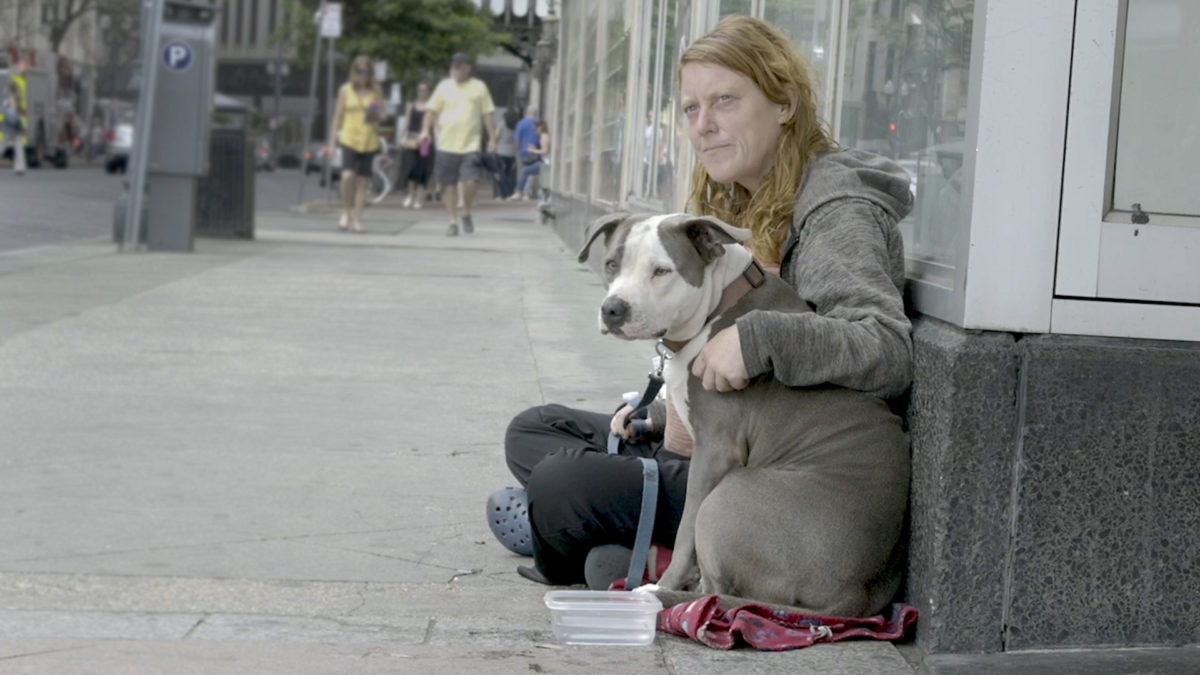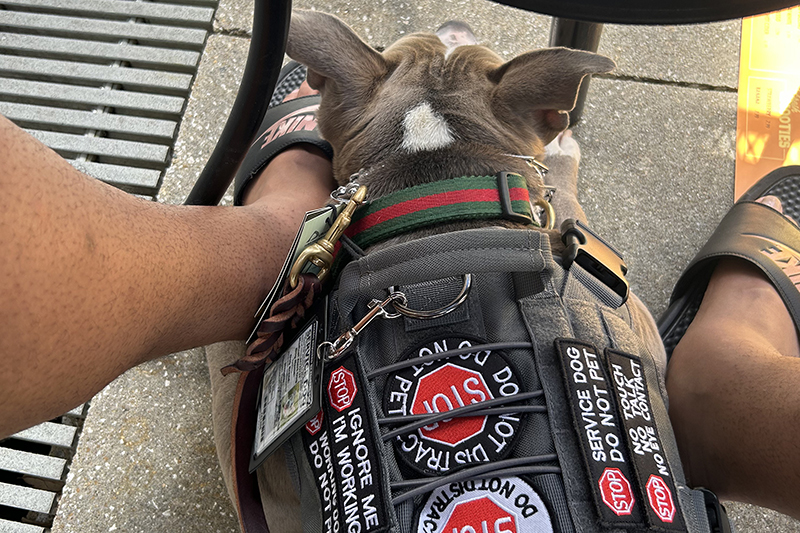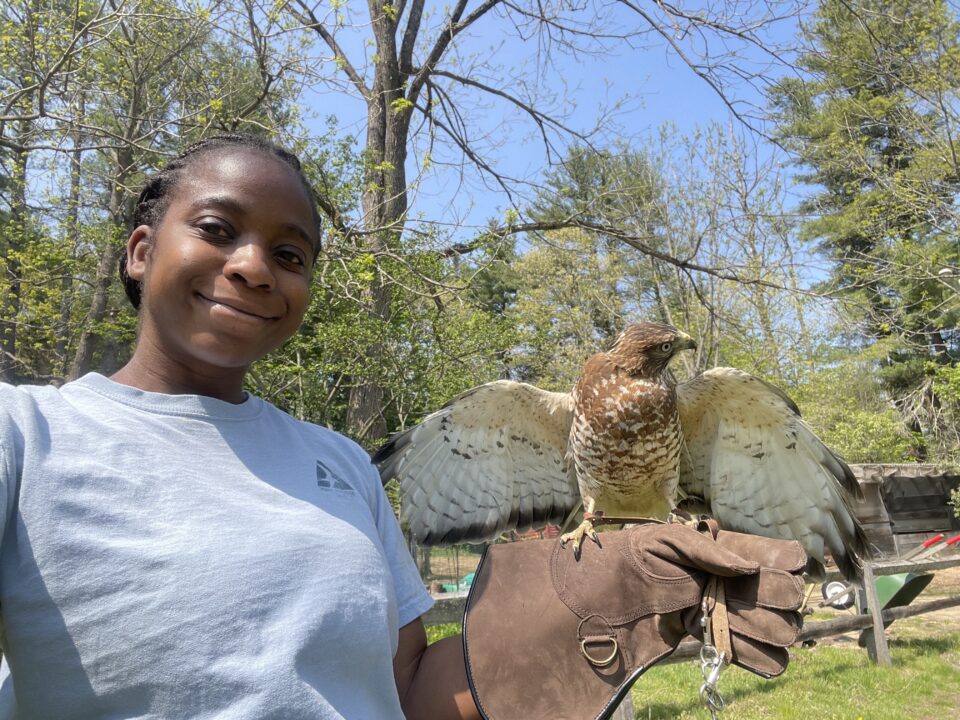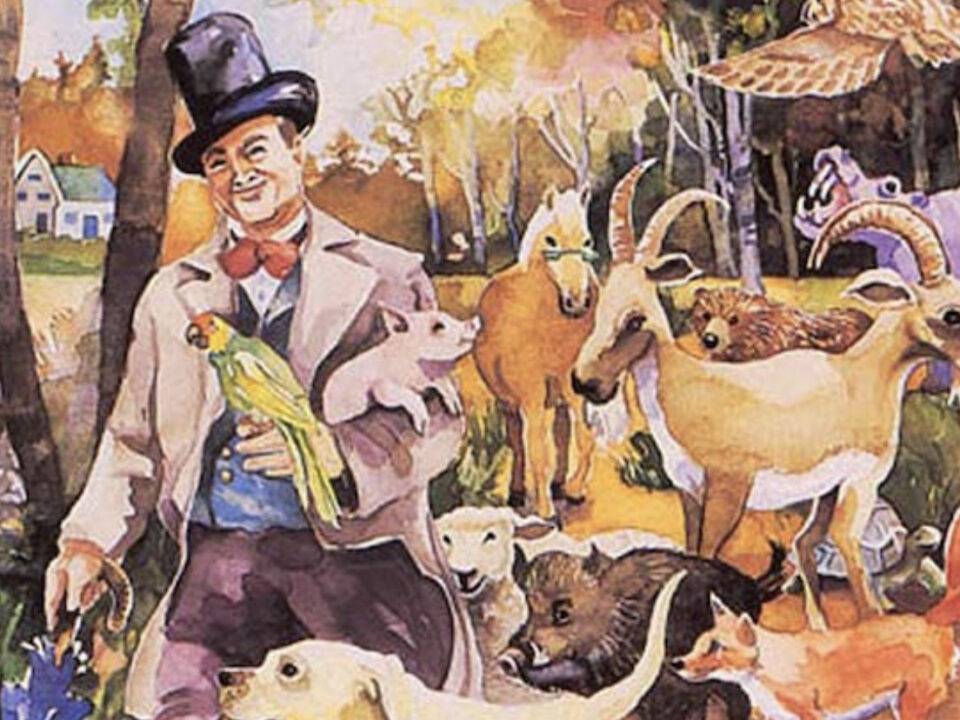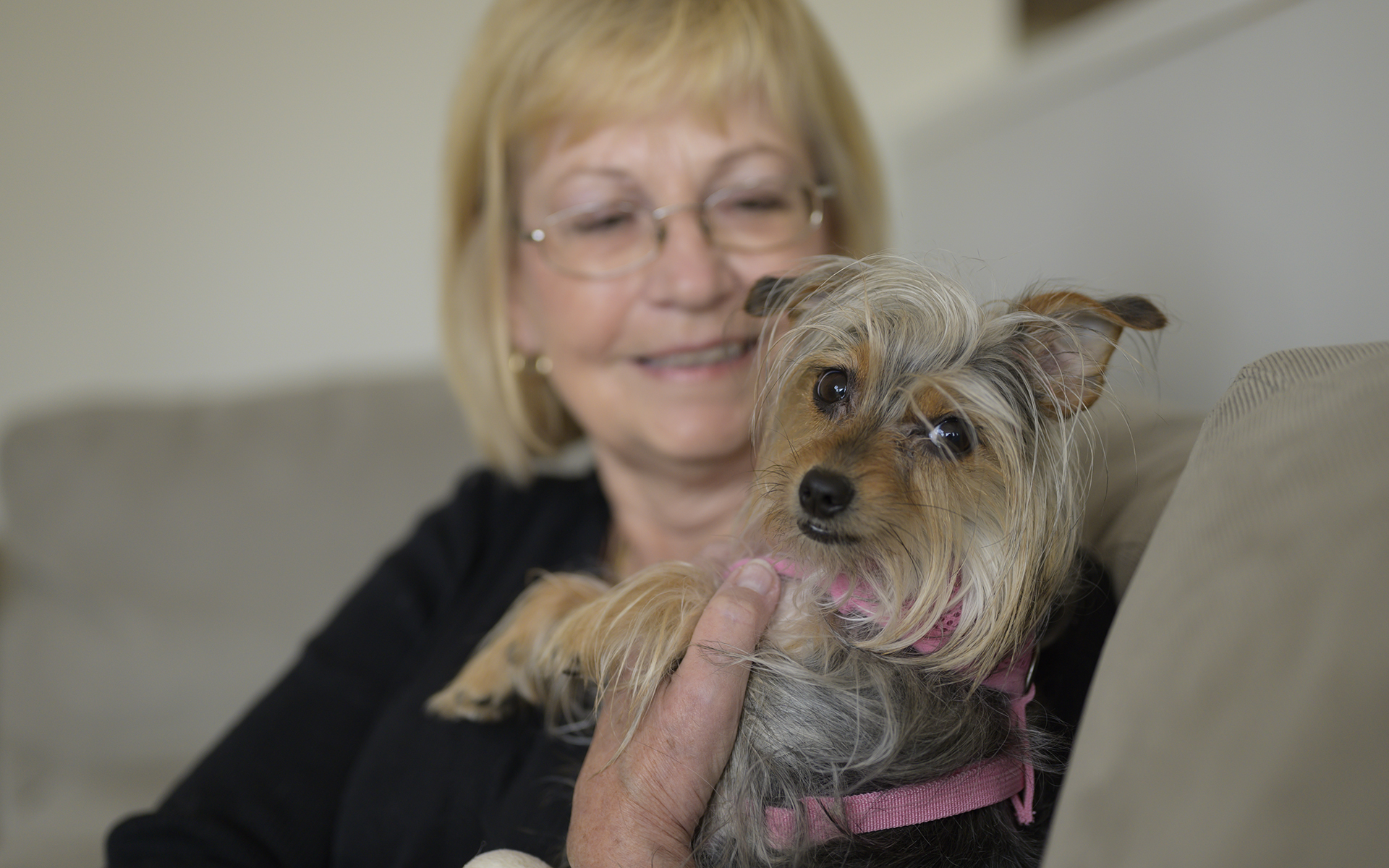
Age likely why Wisconsin rescue group denied 70-year-old woman dog adoption
May 14, 2020
In Pursuit of the Real Juneteenth
June 3, 2020Original Content provided by: Pet of the Homeless
By: Jim Ross
Street Dogs and Their Human Companions
While hiking on le chemin St. Jacques de Compostelle (the Way of St. James) through France’s midi-Pyrenees, I was unsure most days whether and under what conditions I’d find shelter. I regularly missed trail markers, diverged from the prescribed path, and had to trace my way back. One day, straddling the town line, unsure whether to stay or move on, I was picked up by a German shepherd, Zita, who caught my attention with a “follow me” look. She led me up a long hill and, at each cross, she stopped to meditate and pee. At the top of the hill was a chapel dedicated to St. Roch, the patron saint of dog lovers (and perhaps dogs too). She immediately entered the third pew to the right, sat, and again meditated. Several minutes later, she walked out, and I followed. Sitting together at a picnic table, Zita and I shared a light lunch of Comte cheese I had purchased before starting my pilgrimage and dried blueberries. When I said goodbye, she gave me another look, “Where d’you think you’re going without me?”
Zita kept me company until long past sunset. Whenever a car hurtled toward us on a country road, she placed herself like a shield between me and the car. When a red-eyed, long-horned cow charged me, Zita counter-charged, and the cow reared up on hind legs, then made a quick exit, stage right. By the time we reached the forest, the sun had already set; however, Zita could perceive what I couldn’t. For example, seeing a “Warning: Electrified Fence” sign, she scooted beneath safely, so I followed suit.
Dehydrated, doubting we’d find our way out of the woods, unsure what creatures lurked in the darkness, I found myself repeating, “Dog is love,” and “My dog is my shepherd, I shall not want.” I began to wonder in my dehydrated state, is it possible that Zita is St. Roch reincarnated?
Thanks to Zita’s perseverance, we found our way out of the woods. But when we reached a high-speed road, Zita was out of her element. She stayed on the road despite oncoming traffic, putting drivers, herself, and me at risk. Then she and I reached an agreement: she had to remain at my side until I told her she was free to roam. She readily adopted my rules and stayed safe. How often can two creatures claim to have saved each other in the course of a single day?
Doubting we would find lodging of any sort, I imagined Zita and I would spend a chilly night cuddling in some alleyway. Instead, I was rescued by someone I’d met previously who just happened to be driving precisely where I was, in oblivious distress. After she and I confirmed that all lodging in the town had closed for the winter, she took me to the priest’s house, where the priest agreed to take in me, but not Zita. I reluctantly said goodbye to my Zita, expecting I’d never see her again. Zita left with my friend. I spent the night sleeping on the priest’s kitchen floor, with his sheet of bubble wrap serving as my mattress. I often thought during that cold, sleepless night, with my hip bones grinding into the hard floor, how cuddling with Zita in an alleyway would’ve offered more creature comfort.

I was still thinking about Zita, and about wanting to go back to find her, when I reached Paris. There I first noticed dogs accompanied by people on the street. Coming off this experience with Zita, seeing dogs with their homeless human companions touched me in ways it couldn’t have before. I photographed one such pair. The man sat on the ground of one of Paris’s many old stone bridges, looking every thread abandoned. He wore a heavy winter coat with a formal hat. His dog—a rust-colored lab pup—curled up on a pink blanket beside him. A sign said, “For sale 300 Euros.” It was nearly November. Surviving winter can be a challenge on the street for both people and dogs. Perhaps the man had concluded his dog might lead a happier life—at least a warmer winter—if owned by someone who had a place to call home.
On future trips in Europe and North America, I began to talk with and photograph more people experiencing homelessness with their dogs more deliberately.

I quickly realized I was seeing many of the same people with their dogs in multiple neighborhoods. Because nearly all were asking for money and food, they probably wanted to avoid overstaying their welcome in one part of town. From a positive perspective, they were expanding their donor base. But there were also more nefarious explanations. Particularly memorable was one young, well-dressed woman whom I always saw with her little Scottie. No matter where I saw her, she was knocked out cold. Sometimes, other dogs kept her Scottie company while she was protected subtly by other people on the street. I observed some people wide awake and smiling in one part of town, then the next day saw them sleeping soundly alongside their dogs somewhere else.
Some people on the street displayed signs explaining the circumstances under which they became homeless. Sometimes, it was simple: something happened and they lost everything except what they carried in a grocery cart. Their signs often made specific requests (e.g., a coupon for a prepaid meal at a restaurant). Now and then, I saw people with their animal companions both where they lived (e.g., in and around tents along a river or canal) and in the heart of town (e.g., asking for donations or mingling with a larger gathering). Often, local passersby knew them and stopped for conversation. One who sat outside a church with his dog and collection plate carried on a long chat with a passing neighborhood skateboarder.
A March 2017 report on housing exclusion found “alarming evidence of rising homelessness” over the past five years in every EU country except Finland. Similarly, in North America, the pathways into homelessness continue to outpace efforts to move people permanently off the street. No data are available on the number of homeless street people who travel with their dogs or other animals. In some locations, such as Paris, where city police have the reputation for being tolerant of people experiencing homelessness, the numbers of homeless in the city is widely believed to have increased several-fold over a five-year period. The number with dogs is believed to have increased at an even faster rate. Charlotte Nivelet, an ethologist formerly at the French national office for the International Fund for Animal Welfare (IFAW) in Reims, France, told me, “For the past twenty years in our towns, we have been seeing ever more young people living on the street accompanied by animals,” mostly dogs.
In France, people living on the street are known by the English word “travelers.” Being a “traveler” with a dog has advantages and disadvantages. A major disadvantage is that an emergency shelter or centre d’hébergement d’urgence will not admit travelers with animals. The biggest advantage is that having a dog protects travelers from the police. According to French mystic, activist, and long-time resident of Toulouse, Sandrine Guilhem, “By law, if the police arrest and jail a traveler, they are not allowed to bring the dog into the jail nor can they abandon the dog to the streets because that would be cruel.


Instead, they must house the dog in a special dog hotel. For most offenses, that’s too much trouble and costs too much money. So the police simply do not prosecute travelers for minor offenses, such as vagrancy or riding a train without a ticket. The same goes for psychiatric centers. They can’t take a homeless person who has a dog without providing separate lodging for the dog.” I’m unaware of similarly compassionate legal protections for dogs outside of France.
Many people bring a dog with them when circumstances push them out of a home and onto the street. Genevieve Frederick of USA-based Feeding Pets for the Homeless told me, “We get lots of calls from people who are about to become or just became homeless. They’ll ask, ‘What am I going to do about my dog?’ They don’t want to be separated. We tell them we can help them get food. Sometimes, all they have to do is ask at a food pantry. And we assure them we can provide veterinary care for their animal for the duration of their homelessness.” Genevieve stressed that eighty percent of those experiencing homelessness stay homeless temporarily, so it is natural they should seek to stay with their animal companions. However, some people living on the street feel a need for companionship and, at life’s crossroads, either latch onto a compatible stray or are given a pup.
Charlotte said animal companions “are a lifeline, a family, a safeguard, an antidepressant for the owner who finds himself in precarious situations. . . . At times it is this bond that represents the final safety net before a total break from society.” Relatedly, sociologist/ethnographer Leslie Irvine from the University of Colorado conducted interviews in the street and at veterinary clinics with people experiencing homelessness with an animal. She says people living on the street describe their animal companions as life changers and lifesavers in their redemption narratives. The animals encourage people experiencing homelessness to be responsible caretakers and reward responsibility with unconditional love. They also attribute to their animals the role of silent witness in keeping them from lapsing into risky behaviors. The net result of the human/animal relationship among dyads living on the street is development of a moral identity based on commitment. Irvine’s 2013 book, My Dog Always Eats First–Homeless People and Their Animals, details the redemption narratives of the people she interviewed.
Both Genevieve and Charlotte claim many people ask, “How can a homeless person, whose inability to take care of himself has gotten him into this predicament, take decent care of an animal?” However, according to Genevieve, “It’s hard to overlook that homeless people don’t leave their dogs in a cage all day the way many people do when they leave their homes for work. Street people remain with their animals, looking out for their welfare, day and night, and it’s mutual from the animal, too.”

Some doubters allege, “They’re just using this animal to milk my sympathies. It’s all a con.” Again, said both Genevieve and Charlotte, when people observe the caring connection between people living on the street and their animals, they tend to back off. Some still cling to the claim they’re being manipulated, probably because they feel a real emotional reaction and want to dismiss it or rationalize it away.
Many people who normally would never approach or even cast their eyes on people living on the street react differently when they see someone with a dog. They first approach the dog and begin to pet, talk to, or feed it. Then, almost inadvertently, a door to communication with the dog’s human companion opens. According to Genevieve, “Having a dog or other animal helps people experiencing homelessness open up lines of communication with non-homeless humans who come to see them as caring.”

In France, there are crossroads where the paths of a community’s “travelers” tend to intersect. According to Sandrine, the homeless intersect around Toulouse’s Matabiau Train Station because (1) travelers can take their dogs on the train, but not the bus or subway; (2) showers can be obtained there for two Euros; and (3) restaurant waste for humans and dogs can readily be found. At 8 p.m. in mid-July, I saw 70 to 100 people experiencing homelessness, nearly all with dogs, on the esplanade outside the Matabiau Train Station, far more than during the day.

Sandrine explained: “Every night at 10 p.m., the ‘sanity bus’ comes through with food, medicine, water, blankets, and condoms for the travelers. There are also medical personnel to provide urgent care. The bus doesn’t provide services for dogs, but there are other sources of aid for dogs, including veterinarians who charge only for medicines. A lot of travelers won’t take their dogs to the free clinics, though, because they refuse to get their dogs sterilized.”
It sometimes seemed that the dogs, who knew each other well, served as peacekeepers by redirecting the action when an attack against a human with whom they were familiar seemed imminent. Genevieve said the dogs protect their sleeping human companions by warning intruders to stay away or by waking their human companions. I also observed that when tensions began to develop between people living on the street, their dog companions began to walk intersecting, expanding circles in between them to try to defuse or avert a fight.
Legend has it that people first traveled with dogs in large numbers to Montpellier, where humans and dogs have long celebrated each other. There’s something exquisite about the notion that it began there. Montpellier is the birthplace of St. Roch, a fourteenth-century mendicant pilgrim and ascetic, the patron saint of dogs and dog lovers. According to legend, Roch’s father, the governor of Montpellier, decreed on his deathbed that Roch would succeed him. Roch would have none of that and gave all his wealth to the poor. When he fell victim to the plague, Roch hid in the forest, expecting to die. A dog began to visit him daily, bringing stolen food and licking his wounds.

Depictions of Roch show his left hand lifting his tunic to reveal an open wound on his thigh, while his right hand accepts food from an attentive dog. After the dog nursed him back to health, Roch traveled throughout Italy healing others. One possible explanation for why street people have been traveling with dogs in Montpellier for centuries is that many were pilgrims who journeyed for weeks or months to reach Roch’s birthplace. Given my experience with Zita, this interpretation resonates with me.
I like to believe that having a dog companion deepens the compassion of travelers who live relatively solitary lives. Analogously, when the lives of passersby and travelers with dogs intersect, the resulting encounters deepen the compassion of some passersby. At first, they are drawn to the dog. As the dog starts responding to their attentions, passersby begin to interact with its human companion. They then undergo a transformation in how they perceive that person: not as a panhandler or a social burden but as another caring human being.
A year after I met Zita, I returned to France to walk on le chemin St. Jacques with my wife, hoping against hope we would meet Zita again. All I knew was that her tags said, “Les Ingles.” We went to the place where I met Zita, hoping she’d be waiting to lead us uphill to the Chapel of St. Roch. Alas, no Zita. I said, “Maybe she’s already gone up.” We walked up the hill, but no Zita waited in the third pew on the right meditating. Wasn’t this her place? I felt empty.
We followed the signs to Les Ingles. It consisted of three homes overlooking a pasture. Zita ran to greet my wife, whom she’d never met before, as a familiar friend. Moments later, we met her owner, Mr. Schmidt, and I recounted to him my Zita story. He palmed his forehead and explained that Zita ran off repeatedly to accompany lonely strangers on far-flung journeys and got back home only because generous strangers drove her. At that point, Zita was running big, interlocking circles on a deeply green pasture as she herded a neighbor’s cows. She charged at those not readily cooperating. Mr. Schmidt took us inside, served tea, displayed his wondrous library, and said we could rent the place anytime for 450 Euros per week. When I asked whether Zita came with it, he laughed, “If you take Zita, the price goes down to 350 Euros.”
These photos attempt to document the bond between people living on the street (aka travelers) and their dogs in Europe and North America. One of the last I met was sitting on a platform of the Washington, D.C. subway system. He carried a sign, “Hungry Broke Nomadic Folk.” His dog wore mufti sidepacks that matched his overstuffed backpack. He said, “I don’t like where this country is headed. I think I’ll take one more circuit, following the seasons. Along the way, I’ll try to pick up day work on farms. That’s what I do. After that, it’s probably time to try another country.” He laughed, “Maybe I’ll go to Russia.” I asked whether he’d been to Canada. He asked, “Do they have farms?” I said, “Beautiful farms, you should see British Columbia. Just north of Seattle.” He said, “Come to think of it, no. I should go to Canada first.” I said, “Maybe I’ll see you there.”

See discussions, stats, and author profiles for this publication at: https://www.researchgate.net/publication/336169884


